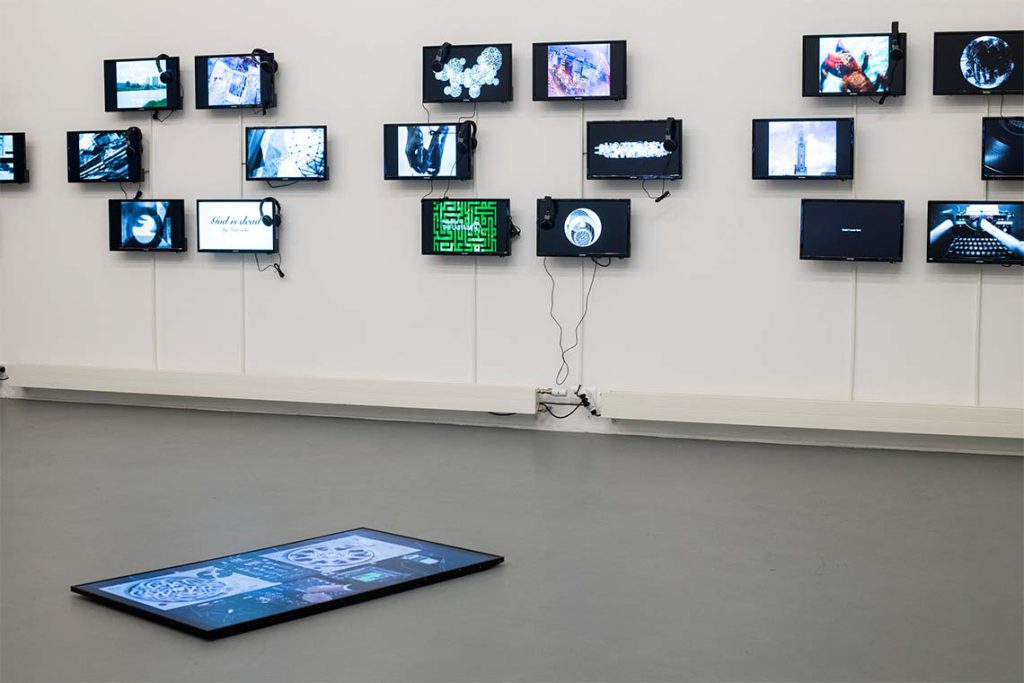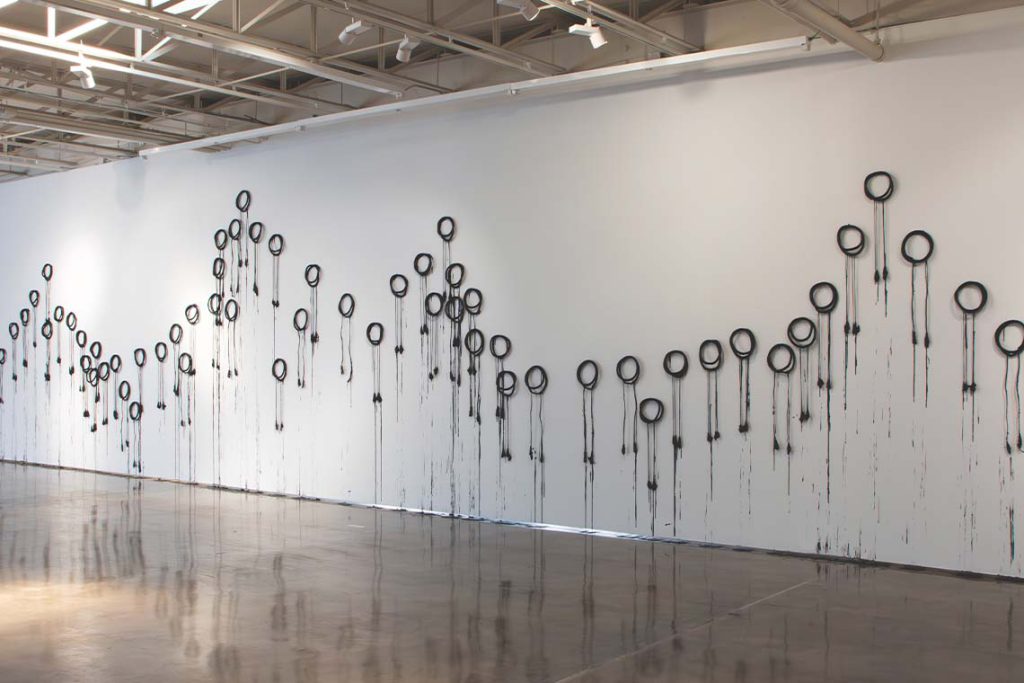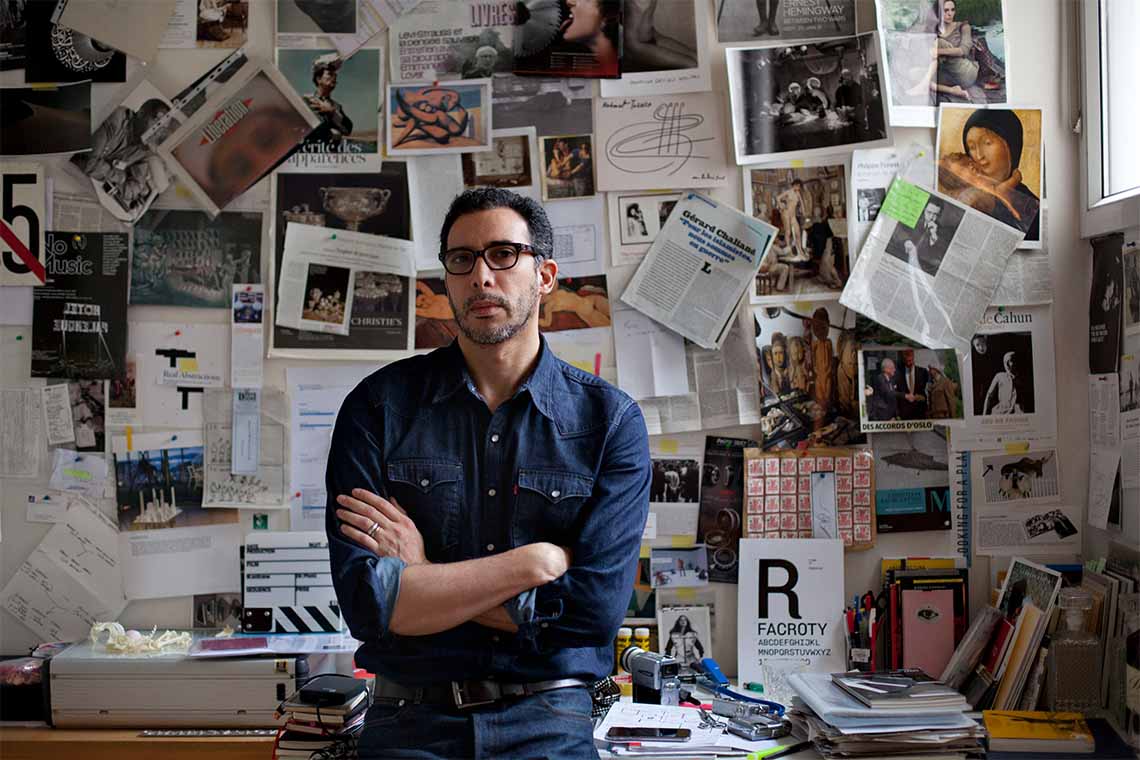The artist discusses technology as a living archive, the role of the artist in the face of the energy crisis and his latest show at Piero Atchugarry Gallery.
Canvas: What is the nature of the relationship between technology, the past and the future in your work?
Mounir Fatmi: Everything is interconnected. It is often developed according to a value system that functions like a network of connections, so I believe the best way to approach and interpret it is within the context of complexity and confusion. To me, technology is merely an extension of our bodies, and technological advancements have always shaped our collective memory and perception of history. What particularly interests me is how technology, whether obsolete or cutting-edge, is intertwined with how we connect with each other and understand the past, as well how it influences our view of the future. Of course, this relationship is complex and multidimensional.
Many of your installation works incorporate outdated or obsolete forms of technology. How do you source these materials?
As far as typewriters, VHS tapes and antenna cables are concerned, I often acquire these items at flea markets, thrift stores or even by salvaging personal belongings, which I frequently integrate into my installations. What’s interesting here is that the final artwork brings together the artistic proposal along with these media as an archive. I’ve always said that my work exists somewhere between the archive and archaeology. Without being nostalgic, I still find conceptual and emotional richness in these objects from the past.
Your work often uses video and sound in its critique of media and technology, such as the Jameel Prize-winning Modern Times, A History of the Machine (2009). What is behind this choice of medium?
It stems from my belief that these media are inherently connected to our contemporary reality. They allow me to create visual and auditory narratives that question the information society and its impact on our daily lives. However, I admit that I have always considered video and sound as very fragile media, despite the fact that I continue to use them for certain projects when they are indispensable. You know, a power outage is all it takes for a video or a sound piece to cease to exist. In 2018, I made the decision to only show videos in my exhibition This is my Body at Wilde Gallery in Geneva, and I confess that every day I wondered if the videos and sounds were functioning properly. I never ask myself this question when it comes to exhibiting paintings, sculptures or installations.

In your latest exhibition Whispered Stories of Forgotten Wires at Piero Atchugarry Gallery, the titular work, a sound piece, introduces a personal diaristic element to your oeuvre. Is there a continuity between this piece and your wider practice?
Indeed, the installation Whispered Stories of Forgotten Wires (2023) incorporates personal elements – stories I write when I feel the need to convey something that cannot be shown through painting, sculpture or video. I believe this is the first time I’ve integrated something intimate into an installation. However, I’ve been aware since the beginning of my career that I am a storyteller and that my works are often laden with narratives. I think this also reflects my desire to explore more personal aspects of my own history and relationship with technology.
The French philosopher Gilles Deleuze suggests that we never truly begin anything. We are always in the middle, between a starting point and an end. It is from this perspective that I conceived the entire exhibition at Piero Atchugarry gallery. So, yes, there is undoubtedly a continuity between this installation and my entire artistic practice.
The exhibition also touches on the political exploitation of energy resources through Oil, Oil, Oil, Oil Analytics (2023).
This is a crucial topic of our time. Energy is what has shaped us into what we are today, and without this energy the world is at risk of undergoing profound changes. Our entire life and technology are tied to the question of energy. If we don’t find alternative energy sources, we will likely fight over the last drop of oil.
What is the role of the artist in the face of this reality?
I have always pondered on the role of the artist within a society in crisis, and believe my role is to prompt the viewer to reflect on these intricate issues. The installation Oil, Oil, Oil, Oil Analytics aims to raise awareness about the dependence on fossil fuels and its ecological and geopolitical consequences. Despite its minimalist appearance, utilising the repetition of a single motif – the round agal, an accessory worn around the keffieh – the installation maintains an unsettling and urgent quality.

How significant are circles in this piece and in your work?
They hold multiple meanings. They can represent continuity, repetition or the interconnection between elements of my narrative. They often function as a visual metaphor. They also reference the circularity of history and how technological advances sometimes seem to bring us back to ancient issues. As I’ve said, I don’t believe in a beginning and an end. I believe we live within a perpetually changing circle. Our life, our time, are circular. I don’t think our history is a straight line.
For decades, many regions in the Global South have served as a dumping ground for e-waste from around the world. Do you address this in your art?
It is very difficult to elicit a response from the audience regarding the impact of electronic waste in general. This is directly related to the obsolescence of the technology I often discuss in my work. It also underscores the issue of excessive consumption in developed countries and the environmental and social consequences of this mass production. I have always sought to raise awareness of these issues and encourage reflection on our collective responsibility, although I am not very optimistic, and I do not believe that art can succeed in this domain. I believe it is the responsibility of each of us to consider what technology we consume and what we discard after use.
Your work also often contains elements of geometry and Arabic calligraphy, as well as themes to do with religion.
Geometry has always been rooted in cultural and religious contexts, not only in the Arab-Muslim world. The Western world has also had theological debates about geometry and the representation of the divine. Spinoza wrote, “If the triangle had the ability to speak, I believe it would say: ‘God is eminently triangular’; and the circle would also say, by eminent reason, that the divine nature is circular; and thus, each thing would affirm its own attributes of God and become like him.” Geometry and Arabic calligraphy have been part of my artistic exploration since the beginning of my career. They add an aesthetic and symbolic dimension to my narrative work while evoking the complexity of our relationship with space.
This interview first appeared in Canvas 110: It’s Electrifying



